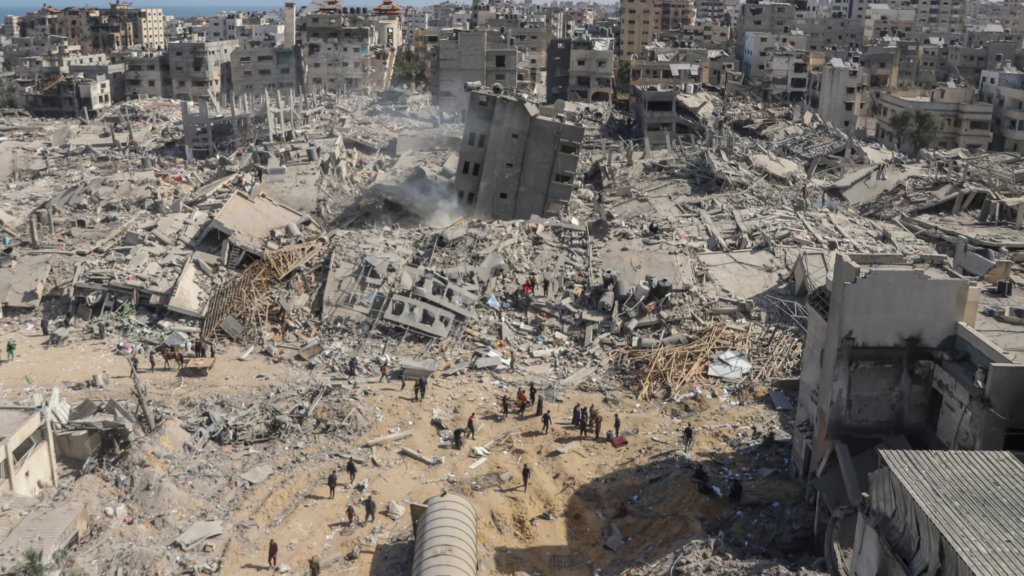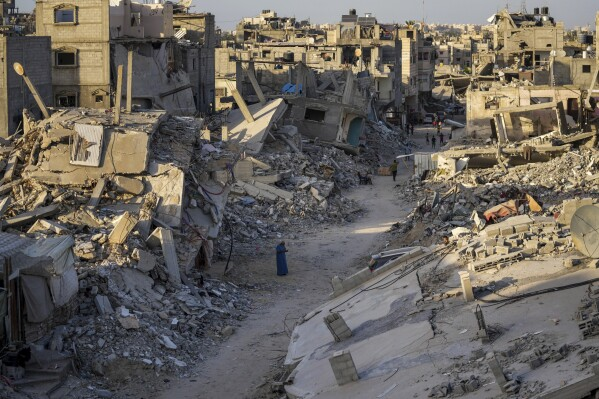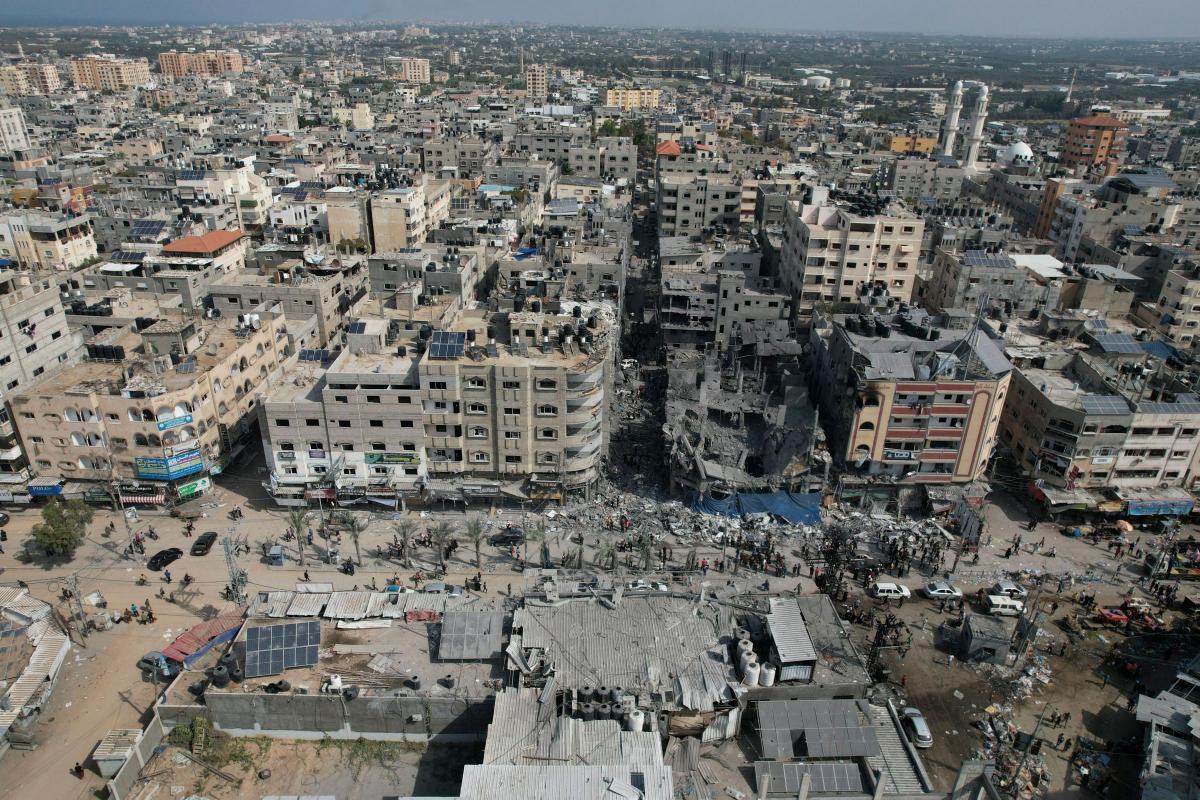The Gaza Strip, one of the most densely populated areas in the world, has been the center of numerous conflicts and blockades for decades. The destruction caused by the latest war between Israel and Hamas, which erupted on October 7, 2023, has brought even more devastation to this small strip of land.
According to a recent report by the United Nations Conference on Trade and Development (UNCTAD), if Gaza continues to remain under blockade, it could take as long as 350 years for the region to rebuild its battered economy and infrastructure. The report paints a grim picture of the future, underscoring the immense challenges that lie ahead for the Palestinian people.
Decades of Conflict and Destruction
The Gaza Strip has been subjected to multiple wars and blockades over the years, but the 2023 conflict between Israel and Hamas has been described as one of the most destructive since World War II.
The war has left entire neighborhoods in ruins, with homes, hospitals, schools, and infrastructure severely damaged or destroyed. Roads are impassable, and basic services like electricity and clean water have become luxuries for many in the territory.
Read : Nowhere is Safe in Gaza: UN as 100 Killed in Israeli Strike
The UNCTAD report highlights the scale of destruction caused by the war and how much work is needed to rebuild Gaza. Before any reconstruction can begin, mountains of rubble will need to be cleared, and unexploded ordnance and decomposing bodies must be dealt with.
The report estimates that under current conditions, it could take up to 350 years to restore Gaza’s economy to its prewar level, which was already fragile.
The Economic Impact of the Blockade
Since 2007, Gaza has been under a strict blockade imposed by Israel, which has severely limited the movement of people and goods in and out of the region. The blockade has crippled the economy, leaving it dependent on foreign aid and humanitarian assistance.
According to the report, the blockade has contributed to a GDP growth rate of just 0.4% from 2007 to 2022, which is far below the level needed for sustainable development.
The war has only exacerbated this economic decline. At the end of January 2024, the World Bank estimated that the damage caused by the war had reached $18.5 billion, which is nearly equivalent to the combined economic output of both the West Bank and Gaza in 2022.
This figure only includes the destruction up to that point and does not account for the subsequent Israeli ground operations that caused further damage in areas like Rafah.
The UNCTAD report suggests that even if the war were to end tomorrow and Gaza were to return to the conditions that existed before Hamas’s October 2023 attack on Israel, the economic recovery would be extremely slow. The report projects that at the current rate of growth, it could take centuries for Gaza to rebuild its economy.
The slow recovery would also be accompanied by a continuous decline in GDP per capita as the population grows, which would further strain resources and limit development.
A Path Forward: The Need for Change
Despite the dire projections, the report emphasizes that the recovery of Gaza does not have to take 350 years. However, this recovery depends on several factors, including the conditions under which it takes place.
Rami Alazzeh, the author of the report, stressed that the current trajectory is unsustainable and that a return to the pre-2023 status quo will not lead to meaningful recovery. Instead, there needs to be a fundamental change in the approach to Gaza’s reconstruction and economic development.

One of the key recommendations from the report is the lifting of the blockade. The blockade has been a major obstacle to economic growth and recovery in Gaza, preventing the movement of goods, services, and people. Without access to essential resources and the ability to trade freely, Gaza’s economy cannot grow at the rate needed to rebuild its infrastructure and support its population.
The report also calls for significant investment in Gaza’s economy. Even under the most optimistic scenario, with a projected growth rate of 10%, it would still take decades for Gaza to recover fully.
This kind of growth can only be achieved through substantial investment in infrastructure, education, healthcare, and other key sectors. International donors, regional powers, and the global community will need to play a crucial role in providing the necessary funding and support for Gaza’s reconstruction.
The UN Development Program (UNDP) has echoed these calls for investment, noting that with major investment and the removal of economic restrictions, the Palestinian economy, including both Gaza and the West Bank, could be back on track by 2034. However, without these changes, the outlook remains bleak, and the recovery could take much longer, aligning with the 350-year projection made by UNCTAD.
The Human Toll of Prolonged Recovery
The economic challenges facing Gaza are immense, but the human toll of the war and the ongoing blockade is perhaps even more devastating. According to Alazzeh, the people of Gaza are not only facing the destruction of their homes and infrastructure, but they are also grappling with the loss of basic human rights and dignity.
The war has left over 2.2 million Palestinians in Gaza in dire conditions, with many having no homes, no access to schools, hospitals, or even basic necessities.
The physical destruction of Gaza’s infrastructure is one aspect of the humanitarian crisis, but the psychological and emotional scars left by the war are just as profound. Families who have lost loved ones, children who have been deprived of education, and communities that have been shattered by the violence will need years, if not generations, to heal.

Rebuilding Gaza is not just about constructing new buildings and restoring the economy; it is also about rebuilding the lives of the people who call the territory home. This requires a comprehensive approach that addresses not only the physical needs of the population but also their mental health, education, and access to opportunities.
Without a sustained and coordinated effort from the international community, the people of Gaza may continue to suffer the consequences of the war and blockade for generations to come.
A Call for International Action
The UNCTAD report serves as a stark reminder of the long road ahead for Gaza’s recovery. The war has caused unprecedented destruction, and without significant changes to the current conditions, it could take centuries for the region to rebuild. However, the report also offers hope, suggesting that with the right policies, investment, and international support, Gaza can recover more quickly.
For this to happen, the blockade must be lifted, and substantial investments must be made in Gaza’s infrastructure and economy. The international community must also ensure that any ceasefire or peace agreement addresses the root causes of the conflict and provides a sustainable path toward recovery and development.
The people of Gaza have endured unimaginable hardship over the years, and they deserve the opportunity to rebuild their lives and communities.
It is up to the global community to step up and provide the necessary resources and support to help Gaza recover. Without this assistance, the region may continue to face a future of despair, and the projections of a 350-year recovery may become a reality.
let’s enjoy few years on earth with peace and happiness….✍🏼🙏

